Conservation pioneer Sir Peter Scott's Slimbridge home to open to the public
- Published
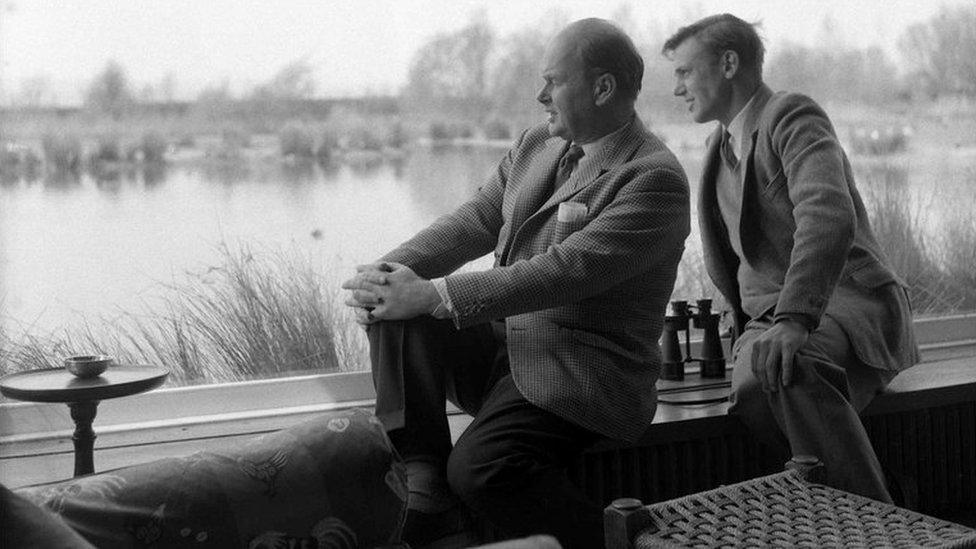
Peter Scott (left) showed David Attenborough (right) around Slimbridge in 1962
The former home of the "patron saint of conservation", naturalist Sir Peter Scott, is to be opened to the public.
The nature reserve at the Wildfowl and Wetlands Trust (WWT) at Slimbridge, Gloucestershire, which he helped found, will also be developed.
Sir Peter, who died in 1989, built his home near the Severn Estuary in the 1950s so he could observe wildlife.
The WWT has been given a £4.4m Heritage Lottery Fund (HLF) grant towards the £6m scheme.
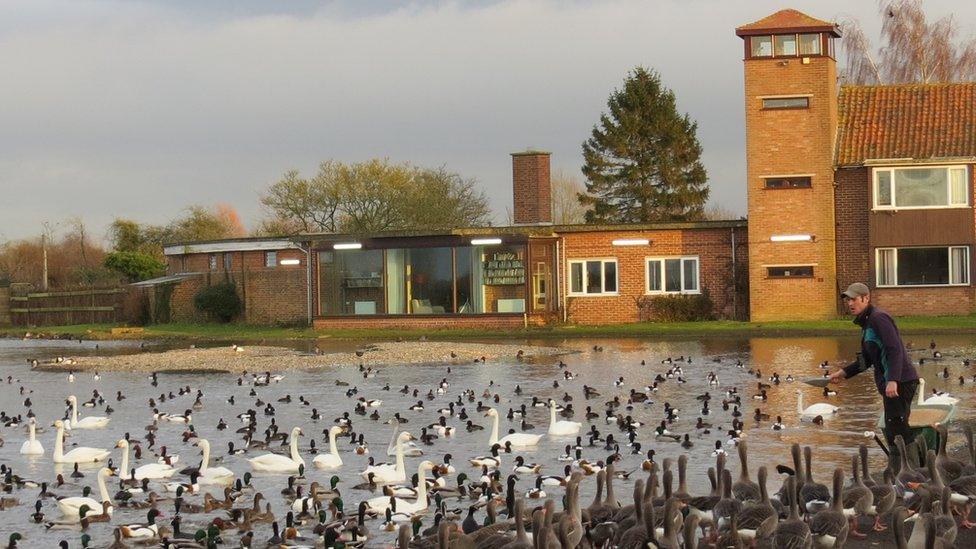
Peter Scott's house includes a large window in order to observe wildlife on the lake
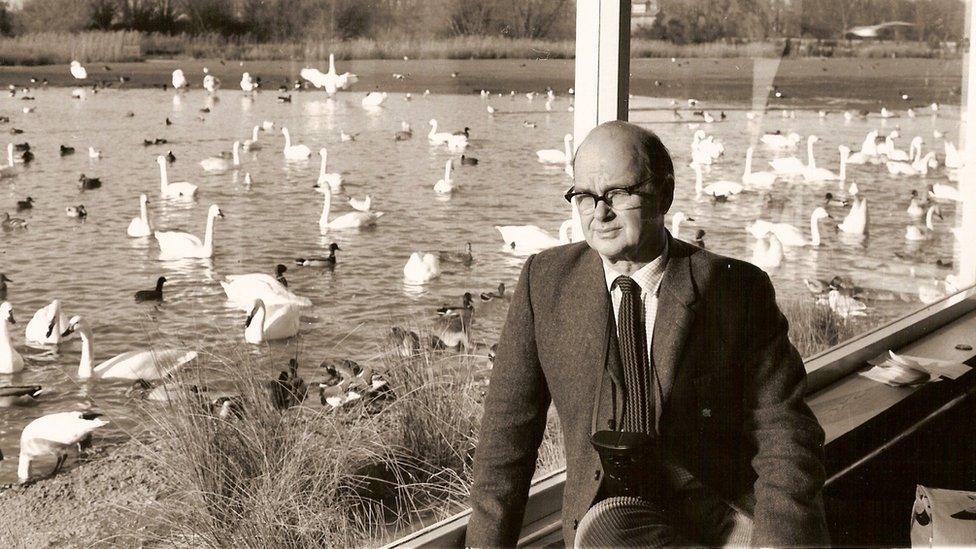
Sir Peter helped to found both the Wildfowl and Wetland Trust and the World Wildlife Fund
The BBC's first ever natural history programme was presented by Sir Peter live from the lounge in the house in 1953.
Other new attractions will include an aviary and theatre, more observation hides, access to WWT's conservation duckery and the original cottage on the site will be turned into a multimedia centre.
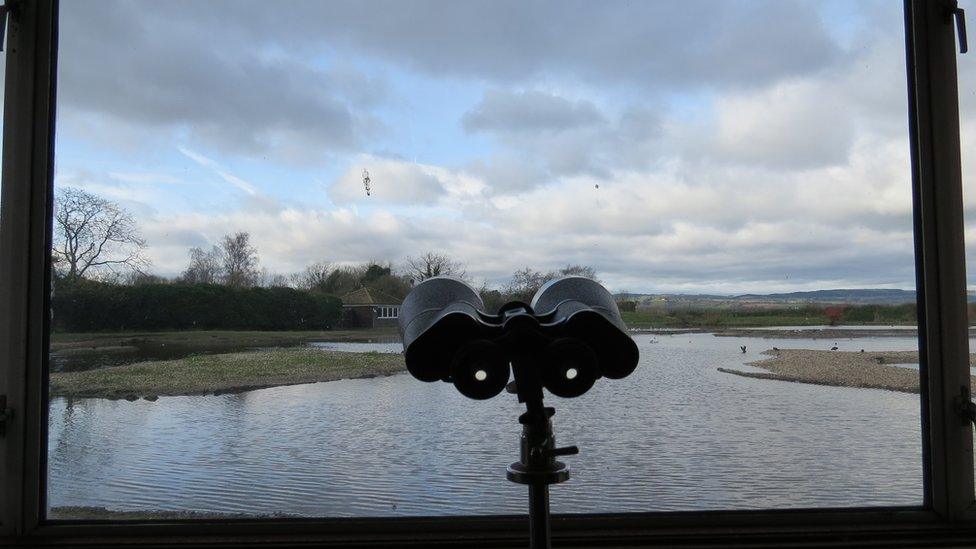
The public will be able to see items such as Sir Peter's original binoculars which are still in the lounge of his home
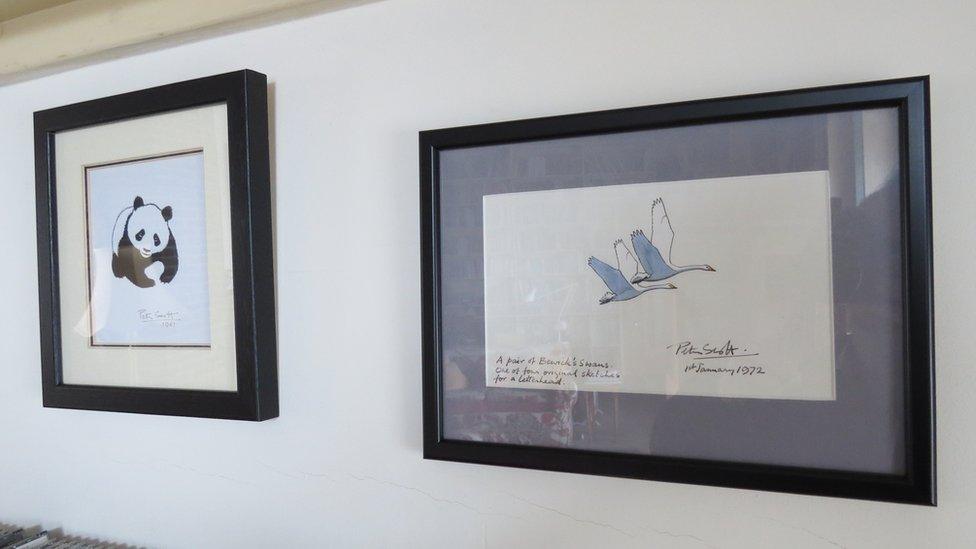
Sketches of the panda logo Sir Peter designed for WWF and the swan logo he designed for WWT are displayed inside his former home
Sir David Attenborough, who was inspired by Sir Peter's pioneering TV career, said he was the "patron saint of conservation".
"Long before words like biodiversity were coined, Peter looked out from that huge window in his house at Slimbridge and realised our lives are so linked with our natural world that we have to learn to love it and look after it.
"I think it's wonderful that absolutely anyone will be able to sit in that same window in future years and feel just as inspired."

Peter Scott's last painting is still on its easel in the studio at Slimbridge
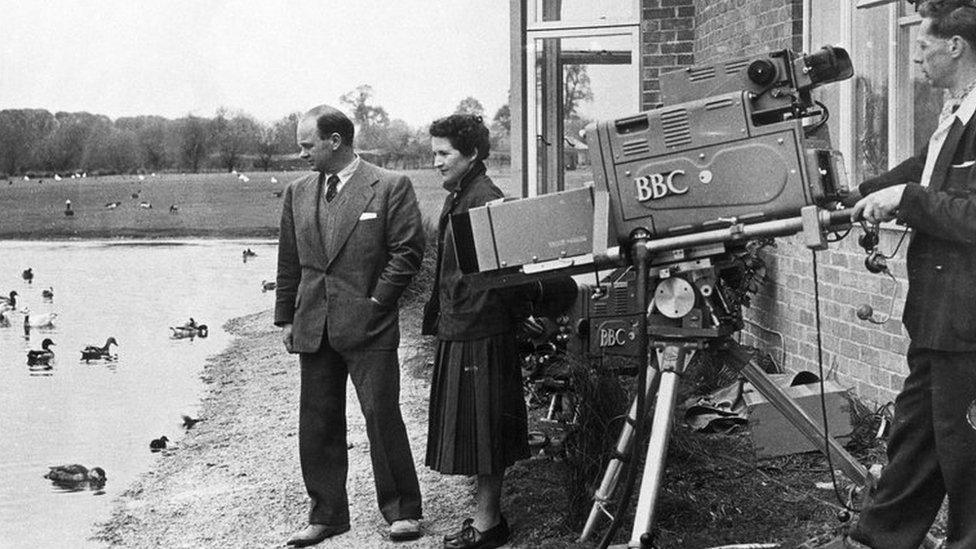
Peter Scott filmed the BBC TV programme Look at Slimbridge between 1955 and 1981
Sir Peter, whose father was the Antarctic explorer Capt Robert Falcon Scott, helped to found the WWT as well as the World Wildlife Fund (WWF).
Much of the house remains as it was when Sir Peter died, and the public will be able to see items such as his original binoculars and his sketches of the panda logo he designed for WWF and the swan logo for WWT.
WWT needs to raise a further £1.6m towards the full cost of the project and work on it is due to start in late 2017.
Sir Peter Scott presented the BBC natural history series Look from home between 1955 and 1981.

Sir Peter Scott:
•The only child of Antarctic explorer Captain Scott who famously instructed his wife to "make the boy interested in natural history"
•Named after Peter Pan - his godfather was author JM Barrie
•A famous broadcaster, he commentated on the Queen's coronation, presented the first BBC nature television programme and the first BBC wildlife documentary filmed in colour in 1963
•Was an accomplished artist. His best-known painting Taking to Wing was printed 350,000 times as a picture or on Christmas cards and table mats
•He was British gliding champion, won a bronze Olympic medal for sailing and was a national championship standard ice skater
•As an inventor, he invented the trapeze that racing crews use to hang from a sailing boat, the rocket net which catches birds, and he helped design the camouflage used by British World War II warships
•The first person to be knighted for services to conservation, in 1973

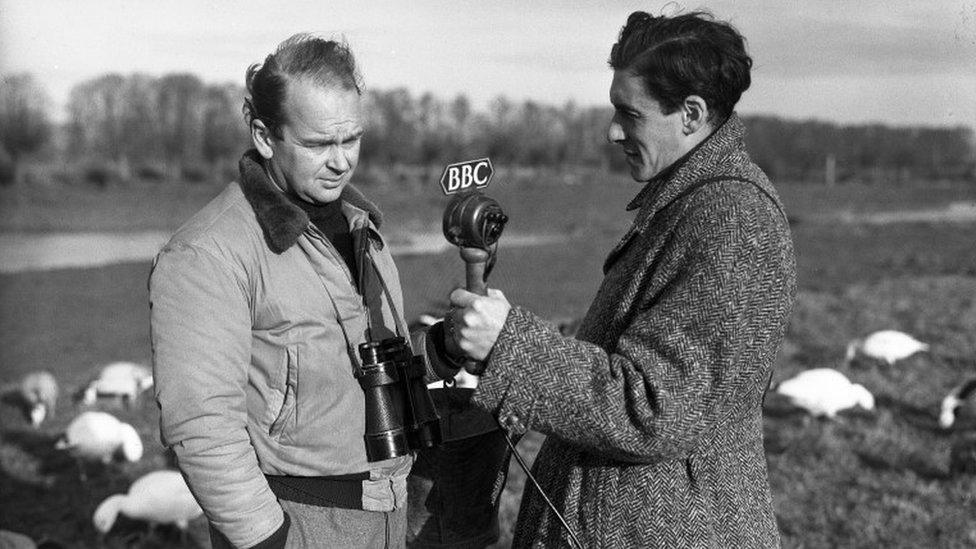
Peter Scott (left) was interviewed in 1947 for the radio programme The Naturalist by Desmond Hawkins, who later founded the BBC's Natural History Unit
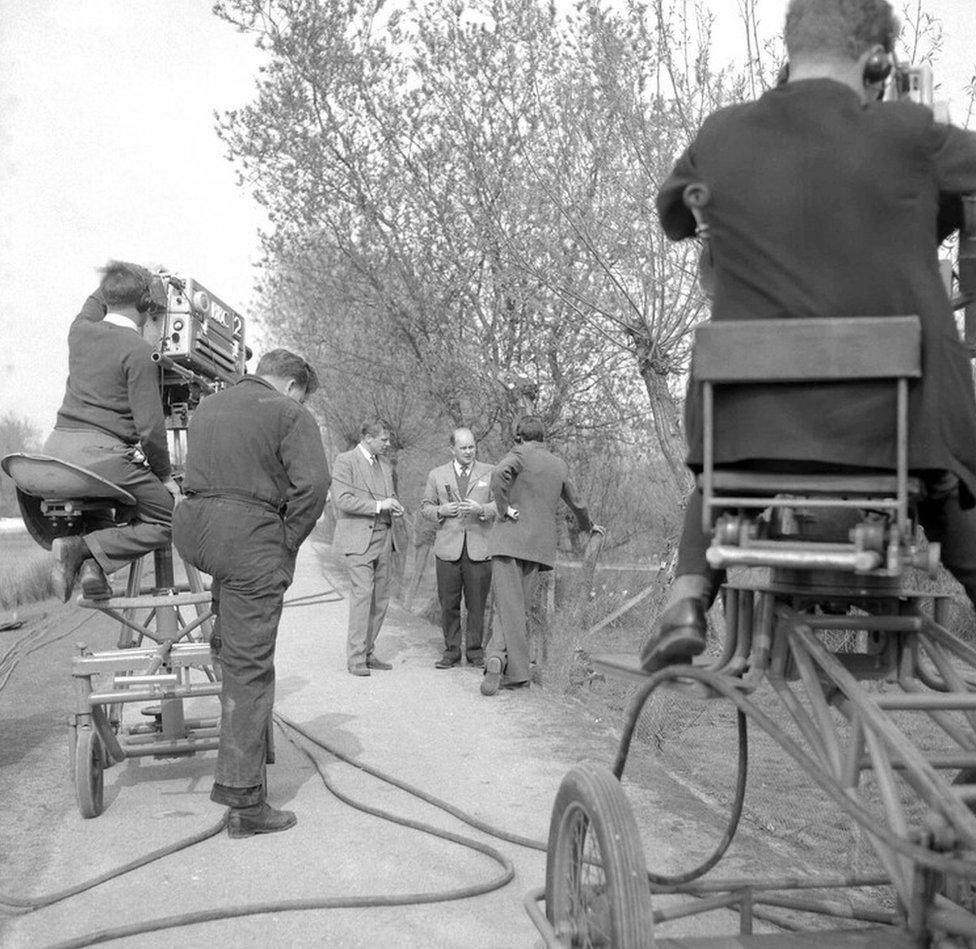
David Attenborough and Peter Scott filmed at Slimbridge in May 1962